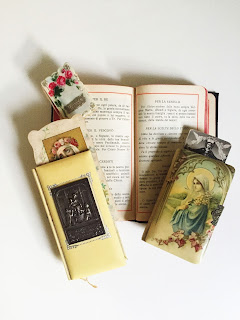![]() |
| The fortress of Masada. |
The Roman war machine: All powering, all conquering. A huge force of highly trained soldiers who created and maintained an empire the likes of which the world had never before seen.
It wasn’t just the sheer number of recruits that made Rome a power to reckon with. It was also their innovation in battle, and particularly in sieges.
Roman history is rich with some truly impressive examples of siege warfare. There was Veii in the 4th century BC where, after years of stalemate, the Roman forces dug a tunnel underneath the walls and conquered the town from within.
The siege of Carthage in the 2nd century BC lasted three whole years. It was finally broken when Scipio Africanus ordered a series of massive siege walls to be built outside the town. These were used to relentlessly attack, and ultimately conquer Carthage.
In 70 AD to gain access to the Judaean Fortress of Masada, which sat on top of a hard to navigate rock, the Romans built an alternative route up the cliff that they could haul their siege towers up. They also built a seven km siege wall in an impressive 3 days.
Battering rams, siege towers, ballista and archers were often used in besieging fortresses and towns.
The story I am about to tell is not of an impressive victory . It is not a story of Roman ingenuity and cunning. Nor is it a tale of the type of patience and persistence that felled Carthage. It’s the story of an unsuccessful siege. A gloriously unsuccessful siege; the siege(s) of Placentia.
A Bit of BackgroundThe year is 69AD. On 15th January Marcus Salvius Otho enacted a coup against emperor Galba in one singular day of bloodshed. The emperor and his associates were decapitated in the Forum whilst all around was bloody mayhem.
By sunset the Senate had no choice but to declare Otho emperor. Escorted up to the palace the new emperor soon realised he had made a horrible, horrible mistake. For amongst Galba’s papers was a horrifying revelation: There was another emperor .
Otho hadn’t known, couldn’t have known when he staged his coup, that two weeks earlier on the banks of the Rhine the German legions had declared their Governor, Vitellius emperor. Vitellius‘ two generals, Valens and Caecina, were on the road marching a force of nearly 70,000 men to Rome.
The Rhine legions were the toughest of the Roman legionaries. Otho had nowhere near the same number of men at his disposal. Realising he was hopelessly outmatched, he tried everything to turn them back. Vitellius was promised money beyond his wildest dreams, influence and a quiet spot to retire in. This didn't move Vitellius and so assassins were sent to Germania. Though evidently not terribly good assassins for Vitellius continued to breathe and the German legions marched onward.
There could be only one emperor and there could be only one way to decide who that should be: War.
The Othonians![]() |
| Emperor Otho |
The town of Placentia was situated in the north of Italy between modern day Milan and Bologna. In the spring of 69AD this was where Caecina was marching his half of Vitellius' forces, some 30,000 men, straight towards.
Charged with holding Placentia for Otho was a pragmatic general named Spurinna. At his command he had three cohorts of Praetorians (the emperor's private bodyguard, and cause of much of Rome's current instability), 1000 infantry and a small gang of cavalry. At most this was 4000 men. 4000 men versus 30,000. Even worse Spurinna's forces were untrained novices, they'd no experience of battle. Neither had the Praetorian Guard who mostly spent their days in the capital enacting crowd control on the locals and thinking up plots. Marching ever closer to these keen amateurs were Caecina's highly experienced, battle scarred German legions
Spurinna was a sensible and practical man. He knew his troops had absolutely no hope against the Germans in an open battle. Every last one of them would be slaughtered within hours. So he ordered that the gates of the town be closed and that they should prepare for a siege.
It was by far the most sensible of decisions. However, Spurinna's men disagreed. Eager for battle they insisted they could take on the German legions. That insistence grew throughout the day until Spurinna realised he was facing a mutiny
Fine, the general demurred, if they wanted to fight, what were they waiting for?
So off they all marched, Spurinna included, to intercept Caecina's army. 20 miles into this march it was decided to set up camp for the night. The Roman way was to construct a camp from scratch, it's what Caecina's forces had been largely doing the whole long march from Germany. But these were new recruits and Praetorians (whose own camp was already nicely built for them on top of the Viminal Hill in Rome). Neither was prepared for such hard labour. Spurinna we can assume watched their efforts with dry amusement. This hard graft broke their mutinous spirits and when someone suggested that Caecina's forces might stumble upon them at any moment, panic ensued. Which was when Spurinna stepped forward and calmly suggested that maybe they'd be better off safe within the fortified walls of Placentia. Lots of eager nodding and then back they marched the way they'd come.
Back behind the walls of Placentia they set to building up ramparts, adding parapets and collecting up anything and everything of any use.
Then they waited for the German legions.
The Vitellians. ![]() |
| Emperor Number 2, Vitellius |
The famously critical Tacitus describes Caecina as "Young good-looking, tall and upstanding." From which we may deduce that he was six foot plus of man hunk. Tacitus also grudgingly accepts he had superficial charm. So let us put him firmly in the fanciable and charismatic camp. Even more strikingly, despite having only been stationed in Germania a few years, Caecina had gone full native and habitually wore Germanic trousers, tunic and plaid cloak.
This trousered giant of manhood had marched 30,000 of Rome's meanest, toughest soldiers thousands of miles across country and mountainside. Though they'd fallen foul of a local Gallic tribe on route, the soldiers were itching to meet a real enemy. One that would challenge them. The town of Placentia was firmly in their sights.
The First Siege Of PlacentiaIt should have been a foregone conclusion. 30,000 hardened fighters against a small force of boys and Praetorians grown soft by too much hanging around the palace. And yet Caecina's Germans failed to conquer the town. Why?
Fear not this is not going to be a dissection of battle techniques, an exhaustive examination of tactics. There will be no little diagrams with arrows pointing all over the place to denote troop movements. There will be no pictures of the battlefield terrain from every perceivable angle.
The reason Caecina's soldiers failed to penetrate the walls of Placentia can be explained in four words: they showed up drunk.
Actually make that very drunk. Very, very drunk. They were so drunk that they turned up to besiege the town without bringing any siege equipment with them. Tacitus tells us they advanced without cover. One can only imagine Spurinna's expression as 30,000 German troops ran at his walls, presumably hoping that they would just fall down spontaneously. Though Placentia got off dent free from this attack, the amphitheatre next to the town mysteriously burnt down. Which shows someone's aim was decidedly off.
Unable to break into the town without equipment and under heavy missile fire from Spurinna's troops, Caecina and his men were forced into a humiliating retreat.
As Tacitus drily notes; "
The first day's action was marked by a vigorous offensive rather than by the skilled techniques of a seasoned army."
Which is polite a way as ever committed to papyri of describing a total cock up.
The Second Siege of PlacentiaI think it is safe to say that the Germans had been a little over confident in their abilities. A little bit cocky and reliant on their scary reputation. I think we are right to suspect that their trouser wearing hunky general may have given an over rousing speech to them prior to the disaster.
![]() |
| Celtic trousers the like of which Caecina might have worn |
But the fact that they all on mass happily believed they could bring Placentia down by sheer force whilst highly intoxicated, does show they were a cohesive army.
They were bruised, they were no doubt suffering horrendous hangovers, but they were not out. Pride needed to be restored. Caecina set them to work overnight constructing the siege equipment they so casually forgot the first time round.
At first light the plains outside the town began to fill with men. Bare chested men. They'd opted to fight the traditional German way: Nipples alfresco.
The soldiers battered and smashed their shields together, singing traditional German war songs. These were soldiers of Rome, yes, but there wasn’t much of Rome about them.
Such was how it must have looked to Spurinna’s young troops as they saw the semi naked troops commanded by a trouser wearing giant line up outside their town. It must have been horrifyingly clear quite how outnumbered they were.
The Germans advanced under cover of the towers they'd spent the night building and set to the gates with crowbars. Others dug down trying to undermine the foundations of the town. An earthen siege mound was constructed. These were proper Roman techniques.
Above them the Othonians rained down javelins at them. Slingshotters and archers bombarded the Vitellians. But by far the deadliest weapon was one Spurinna's men had gathered together overnight from the town; huge millstones. These the praetorians rolled down from certain parts of the wall directly onto the Vitellians beneath. Tacitus tells us the injuries were drastic, men were crushed to pieces beneath the pounding weight. To others seeing their comrades so destroyed, panic set in when further millstones were pushed forward.
Under such a barrage Caecina ordered a retreat. The plucky underdogs had held onto the town!
The AftermathThere was no third siege of Placentia. The epic patience witnessed in those sieges of old was not present in this army. This army, and more particularly their young commander, were itching for a victory.
In the grand scheme of things Placentia was not so important. Or so Caecina no doubt told himself. The best thing was to plough on and face down Otho’s main forces. One highly suspects that Caecina’s eagerness was linked to the fact that Valens was now only a few days march away with his army. Caecina did not want to share any of the glory with his colleague.
Caecina however did not get his great victory. The Othonians had no intention yet of facing the Rhine legions in battle. Instead they sent a small force of gladiators (which gives you some idea as to how hard up Otho was for troops) on ambush missions. Through these skirmishes Caecina lost most of his auxiliary soldiers.
In the end Caecina had to wait until Valens arrived with his own fresh forces to achieve his much desired victory. The Othonians were finally overwhelmed by their enemy's greater numbers. Vitellius was sole emperor.
L.J. Trafford's latest book,
Otho's Regret, covers the strange siege of Placentia and other notable failures of the handsome Caecina.




























































































